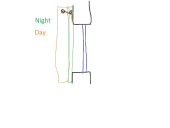
 16
16




 17
17





 14
14




Visit Redhawk's soil series: https://permies.com/wiki/redhawk-soil
How permies.com works: https://permies.com/wiki/34193/permies-works-links-threads
 7
7




 11
11




 11
11




 7
7




 8
8




Visit Redhawk's soil series: https://permies.com/wiki/redhawk-soil
How permies.com works: https://permies.com/wiki/34193/permies-works-links-threads

 14
14




 10
10




 7
7




Weeds are just plants with enough surplus will to live to withstand normal levels of gardening!--Alexandra Petri










 4
4




The light penetration of fiberglass roof panels is reduced overtime. PVC panels have a transparency that is similar to glass and makes it the superior choice when light-permeability is a top concern.
 8
8




Mk Neal wrote:Translucent fiberglass is an option that may be somewhat more sustainable than plastic. Rigid fiberglass is something like half glass half resin (commonly polyester). So it’s not plastic free, but lower plastic content and because it’s durable and long-lasting you’re not continually shedding and replacing plastic.
[...]










 10
10




 14
14




 7
7




 6
6




Jay Angler wrote: look for patio doors as they are tempered glass which is a little safer.
 7
7




 7
7




This is why I'm finding the picture of the greenhouse roof so intriguing from this thread: https://permies.com/t/262705/Medieval-Korean-oiled-paper-greenhouses.I've also used pieces from an older structure that came with the property for a ton of DIY projects - ... In my case there was no choice but to use a soft liner for that structure, it has to come down each year to avoid being declared a permanent structure and running afoul of zoning laws.
Visit Redhawk's soil series: https://permies.com/wiki/redhawk-soil
How permies.com works: https://permies.com/wiki/34193/permies-works-links-threads
 8
8




cindyl541
 7
7




 9
9




 3
3




 8
8




Do not go where the path may lead, go instead where there is no path and leave a trail. Ralph Waldo Emerson
 3
3




Passionate researcher and hands-on gardener
Visit my blog: for Sustainable Gardening Tips
 14
14




“We can complain because rose bushes have thorns, or rejoice because thorn bushes have roses.” — Abraham Lincoln
 7
7




Visit Redhawk's soil series: https://permies.com/wiki/redhawk-soil
How permies.com works: https://permies.com/wiki/34193/permies-works-links-threads
 5
5




🌱 Exploring Permaculture Learning & Growing 🌍
"Step by step toward a more sustainable life." 🌾
 13
13




 9
9




“We can complain because rose bushes have thorns, or rejoice because thorn bushes have roses.” — Abraham Lincoln
 6
6




Jen Fulkerson wrote:That's awesome, I love your out of the box thinking.
Most cattle panel are 16' long . It depends on how tall you want it.I think mine are about 7' high, and that gives me about 4 1/2 to 5 foot space. But mine is in a raised bed so it's elevated 18". So it really only about 5 1/2 ' tall. You may have to connect 2 panels together to get the height and space you need. Good luck.
 6
6




 10
10




Maieshe Ljin wrote:A paper expert and photographer I know says that hanji or any other paper likely has to be replaced yearly which is certainly something to consider.
Visit Redhawk's soil series: https://permies.com/wiki/redhawk-soil
How permies.com works: https://permies.com/wiki/34193/permies-works-links-threads
 7
7




 2
2




“We can complain because rose bushes have thorns, or rejoice because thorn bushes have roses.” — Abraham Lincoln










 4
4





|
The glass is neither half full or half empty. It is too big. But this tiny ad is just right:
Learn Permaculture through a little hard work
https://wheaton-labs.com/bootcamp
|



